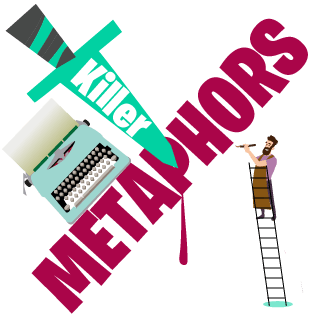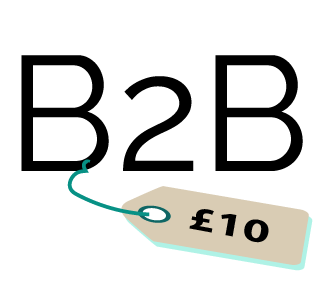Have you ever wondered how writers convey their ideas with such clarity and elegance? The answer lies in their ability to construct writing with rich and powerful analogies using metaphors.
The best communicators are able to draw on their readers’ familiar experiences. They use anecdotes to explain even the most complex matters.
Most people will often associate metaphors with poetry, literature and art.
But what many of us fail to realise is that we often (and unknowingly) use metaphors in our daily conversations.
Metaphors make complex and unfamiliar ideas simple and familiar. This is because they compare the unknown with the known. That is, to what the listener or reader already knows and accepts.
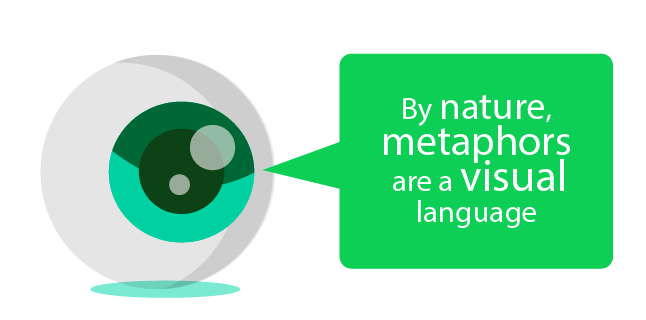
By nature, metaphors are a visual language. They help an audience recognise almost instantly what you mean, in a vivid and emotional way.
In fact, metaphors are so effective in communicating both tangible and conceptual information that they are ingrained in language. As such, they are an integral part of the English language. And taught to students at school from a young age.
That’s what makes them so effective in content marketing.
They’re universally accepted as a writing technique. And, they can convey messages to audiences and persuade with ease.
Why Metaphors Work
In today’s modern marketplace, where the digital marketing sphere is becoming increasingly saturated, and audiences are being constantly bombarded with information, metaphors are even more important than before.
To cut through the noise you need to make quality content which is both engaging and informative. In order to do this, you need to use metaphors effectively. They are an effective way to captivate your readers’ attention and keep them coming back to your website for more.
If written well, metaphors can create vivid images in your reader’s mind. As such, they make your messaging more memorable.
In the words of Anne Miller, business coach and public speaker:
‘Imagery – the core of metaphoric language – will surprise, grab, inform, and persuade your [readers] as mere explanation will not. Vivid language will distinguish you from the swarm, will make you heard above the drone, will make you that rare person today: a communicator who gets results’.
Just like a powerful story, metaphors can engage your audience, by-pass their rationality and entice them into the buying journey.
As a marketer they can make your content more persuasive, helping you to drive more business online.
1. Metaphors help us understand concepts with ease
Think of the following common phrases:
- Time is money
- Living life on the edge
- I thank you from the bottom of my heart

These metaphors are used every day. The moment we hear or read these words, we instantly recognise what the speaker or writer is trying to convey.
For instance, rather than wasting time writing a paragraph on how precious time is, you can simply write: ‘time is money’. This is a clear depiction of how much you value time.
This is especially important when writing blog content. Because it allows you to stay concise. It can also help to keep your audience engaged, and maintain a clear message throughout your content.
Today, audiences are consumed by so much content. They don’t have time to sift through the waffle and find your messaging. They want quick, digestible, and clearly identifiable messaging.
2. Visual words create greater impacts
Metaphors are extremely potent tools. They leverage on the one thing that everyone has; our imagination.
The best metaphors create images in our mind that stick with us. This is why they are such effective tools of communication.
For example, instead of showing you a photo of a person, then explaining their actions, someone could use a metaphor. To convey the level of anger that person is experiencing, they might say; ‘he really flared up my temper.’
The most effective words touch on your audiences’ senses: see it, feel it, maybe even taste, hear or smell it.
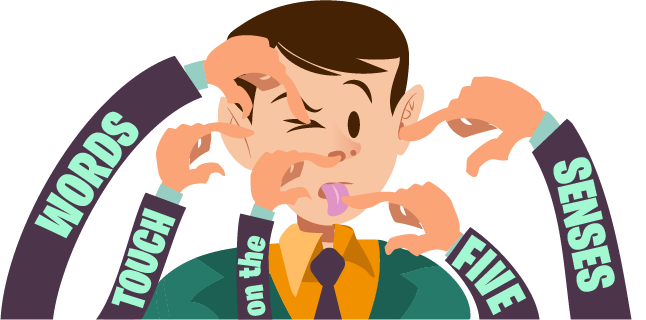
Everything you write must give your audience a visual. The reason for this is because imagery triggers a raft of meaningful associations.
Think about what would appeal to your readers the most. Is it a product or service that increases sales? Or one which can help catapult, jumpstart, trigger, swell, ignite, electrify, or enhance your sales?
3. Metaphors can grab and persuade
Metaphors of any description tend to surprise your audience because they’re not usually what is expected.
For example, you might be looking for a workout program to help you get in shape. So consider coming across this metaphorical blog post title:
‘How to Get Shredded Like Homer Simpson’
Without a doubt, this title will turn your head.
If you can disarm your audience by leading with a metaphor like this, you will grab their attention. You can open their minds to the possibility that there’s still more to learn within the contents of your article.
Once you’ve captured their attention, the metaphor then becomes far more powerful. As the audience begins to automatically associate what you talk about with the metaphor in your title.
Everything you write will be clearer and more cohesive to the reader. This makes them more likely to buy into your beliefs and product/service.
How to Create Powerful Metaphors
It doesn’t take a poet to create effective metaphors.
Humans are like fish.
Fish are unaware of the water that surrounds them their entire lives.
Whereas humans are unaware of how often they draw comparisons and use imagery.
Creating vivid metaphors is easier than you think. Most of us are already unconscious, natural metaphor users. And, if you have a great understanding of who your audience are, you’ll know how best to speak to them. And, which visuals to draw from that will appeal to them.
If you need some pointers on how to create metaphors that really pack a punch, read my advice below.
1. Know your audience
This is the number one rule for any effective communication.
You need a true understanding of your audience in order to connect with them emotionally. Without this understanding, your content will have little to no impact. And, when it comes to metaphors, you won’t know what imagery your audience relates to.
Insights about your audience can be gained in so many different ways. As well as the types of content they interact with. From their social media likes, comments and follows, to interactive surveys and reviews. Or even having real conversations with them in-person or via live chat.
Your audiences’ interests can really help to spark your creativity.

For example, imagine you find out your readers are tennis enthusiasts. You can use headlines such as ‘Meet the Pete Sampras of Business’ to tap into their interest.
It suggests that the article will be even more relevant to their interests. It will provide advice on how to be on the same level of your business as this legendary tennis player.
On the other hand, if you were to use the same headline on a different audience, results will vary. For instance, using it for an audience of bowling enthusiasts is unlikely to garner a similar level of response.
Make use of the free tools out there to take ‘snapshots’ of your audience’s profile. Platforms such as Quora, your social media and even review sites. They can help you to learn more about your audience. From their personal background and industry interests to their views on the world.
And these insights can give endless ideas to play around with when creating your metaphors.
2. Avoid clichés
No one likes a cliché.
They’re old, overused and most importantly, don’t have any effect on your audience.
Common metaphors include:
- ‘It’s apples and oranges’
- ‘The 800-pound gorilla’
- ‘A diamond in the rough’
Most audiences are bored of hearing them in advertisements.
Ideally, a metaphor should be fresh, original, and specific.
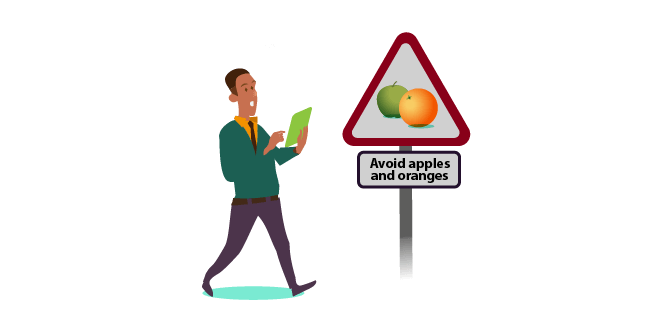
In fact, some of the most original metaphors have gone on to make some of the most successful advertisements.
Remember the Nokia ‘Connecting People’ tagline? It’s original, simple and yet oh-so-effective. It actually enhanced the phone’s value for consumers. It did this by invoking the idea of making an emotional connection with people hundreds of miles away.
That said, if you don’t have a metaphor in mind, using a clichéd metaphor is still better than no metaphor.
3. Look at publications
Effective metaphorical headlines are like best-selling book titles. That is, they both grab and inform your audience. They do this with visual words, energetic verbs or emotionally charged references.
Book publishers understand the importance of metaphors. Especially when it comes to naming books. That’s why there’s so many recognisable titles out there:
- Who Says Elephants Can’t Dance? Inside IBM’s Historic Turnaround
- Who Moved My Cheese? An Amazing Way to Deal with Change in Your Work and in Your Life
- Pigs at the Trough: How Corporate Greed and Political Corruption are Undermining America
- The Subtle Art of Not Giving a ****, A Counterintuitive Approach to Living a Good Life
Even journalists understand the importance of using metaphorical headlines to captivate the readers’ attention. The need to arrest the attention of viewers pressed for time. As such they must convey the essence of an article in a mere few words:
- IBM: From Big Blue Dinosaur to E-Business Animal
- The Euro: High Wire Without a Net
- Will Godzilla Defeat King Kong? (Verizon’s Cingular Threat)
Leading your content with a metaphorical headline can quickly engage and inform your audience. Metaphoric language is packed with imagery. It draws on your audiences’ associations within an instant.
Just always remember, headlines should amplify, not explain.
Using Metaphors Within Blog Content
When producing blog articles, metaphors can be used at different stages of your written content. For instance, in the title, your opening or closing statements.
You can even tie your content together thematically. Using metaphors which are common to a single thread.
1. Openers

Just like a great piece of creative writing, the best way to use a metaphor within your content is to lead with it from the start.
You can use them to tell a story of your own. Or you can invite your listeners to use their imagination.
For example, ‘imagine you are waiting for a train’. Or, ‘have you ever felt so passionately about something that it’s made your blood boil?’.
Both are effective in momentarily transporting the reader away from the words on your page. The reader is guided. They create the visual imagery internally as they think about a past memory or experience.
Overall, the opening of your content will set expectations with your readers about what is to follow.
Start by setting an image or creating a figurative scenario in their mind. That way, it’s clearer for them to understand. They’ll make an immediate decision on what your content is about. And, in addition, on whether it will fulfils what they were initially looking for.
2. Closers
Using a metaphor at the start of your article is all well and good. However, if you don’t conclude your writing by reminding your audience of the opening message, it will lack impact.
Although, don’t use the same metaphor which you opened your blog post with. Instead, write something which circles back to the image or story you first invoked.
When paired with vivid imagery, a closing statement is more memorable. Use a strong metaphor to underscore your message.
Stir up the emotion necessary for your reader to remember the message and take action.
Theme
Consider running a theme or a rich metaphor throughout your article. It’s an effective way to allow your readers to follow what you are trying to convey with your writing.
If your content is dry and full of technical jargon, using thematic metaphors can help. It will maintain the readers’ train of thought and keep them engaged.
The best running metaphor threads rely on themes or worlds rich in image-laden vocabularies.
For instance, the world of trains, football or art. These worlds have been around for hundreds of years. They’ve attracted the interests of billions of people. And as such, made a history which almost any reader can associate with through imagery.
If you use a universal running theme. you won’t need to worry about your content being inaccessible.
Reinforcing Your Metaphor Building Power
Like writing, creating impactful metaphors takes time and practice to perfect.
Just as an athlete follows a regime to train their muscles, you can train your metaphorical writing skills. Follow the techniques below and you’ll be an expert metaphor-ist in no time.
1. Observe and Connect

Some of the best writers are observers or connectors. They are curious individuals who train themselves to take notice. They register everything that surrounds them.
These individuals can discern similarities in dissimilar things. They notice patterns. And, they can bridge unrelated ideas and concepts to new situations.
But perhaps most importantly, they can draw associations to make sense of unfamiliar topics and scenarios.
This process is sometimes called lateral or parallel thinking. It is a skill most writers use to create stories. Unlike strict linear thinkers, those who possess this skill have a natural curiosity inside them. And they want to delve into things that excite them.
The key is to feed and develop this curiosity. Watch a documentary or read a book on a topic that you are unfamiliar with. Then try writing a short summary about the messages the creator was trying to convey.
2. Collect interesting ideas

Nowadays, it’s easy to collect clippings of ideas that you have come across on the internet or social media.
Apps like Evernote and Pinterest make it easy to quickly save ideas. Build up a swipe file that you can refer to when you need inspiration for a metaphor. Instead of using your clipping word for word, get creative. Use the clipping as a springboard to invent your own metaphor.
However, reviews of films, books, music albums and TV shows are also excellent sources of metaphors. See how other writers use them to describe ideas and emotions. Then, look at how you can tweak them to incorporate them within your blog content.
3. Visit other worlds

It’s easy to surround yourself with authors, articles and journalism which interest you.
But you should also draw on metaphors and talented writing from different industries or subject areas. This can widen your scope and perspective. It’s also a great way to source new information. And will expand your writing to suit a wider audience.
For example, being a fashion design business doesn’t mean you can’t incorporate metaphors from the world of cars. And if you do, you’ll be making your writing better informed and appeal to a larger readership.
As such, writers who can yield metaphors effectively are like Thanos. They can visit other worlds at will.

They are quick to hit upon a comparison which aligns with their point. And it all happens within their mind.
Final Thoughts
When it comes to content writing, metaphors are among some of the most powerful writing techniques you can use. They can persuade, excite, and inform your prospective customers.
They help you to cut through the noise of the market. As such, they should be used in almost all of your business content.
Whether you’re writing sales copy, a long-form blog article or snappy social media post. By incorporating metaphors into your content, you will be on your way to achieving the results you want.
Developing Your Content With a Marketing Consultant
Of course, metaphors are only effective as the content strategy which lies behind them. Developing a robust content marketing strategy is critical to your online success. But it’s also a huge time investment which demands a whole range of resources.
For many small or new brands, they may not have the resources needed to really make their strategy a success. Such as a team of dedicated copywriters who can produce compelling writing every single day.
Instead, they often turn to a marketing consultant such as myself. Someone who can work with them to develop and implement a compelling content strategy. One that can help them increase their reach and online sales.
If you’re looking for help with your website’s content, why not get in contact with my team today? Whether you need advice on how to write compelling copy. Or are looking for a passionate team of individuals to bring your brand’s content to life, we can help. We offer a whole host of services to help you achieve your goals.
